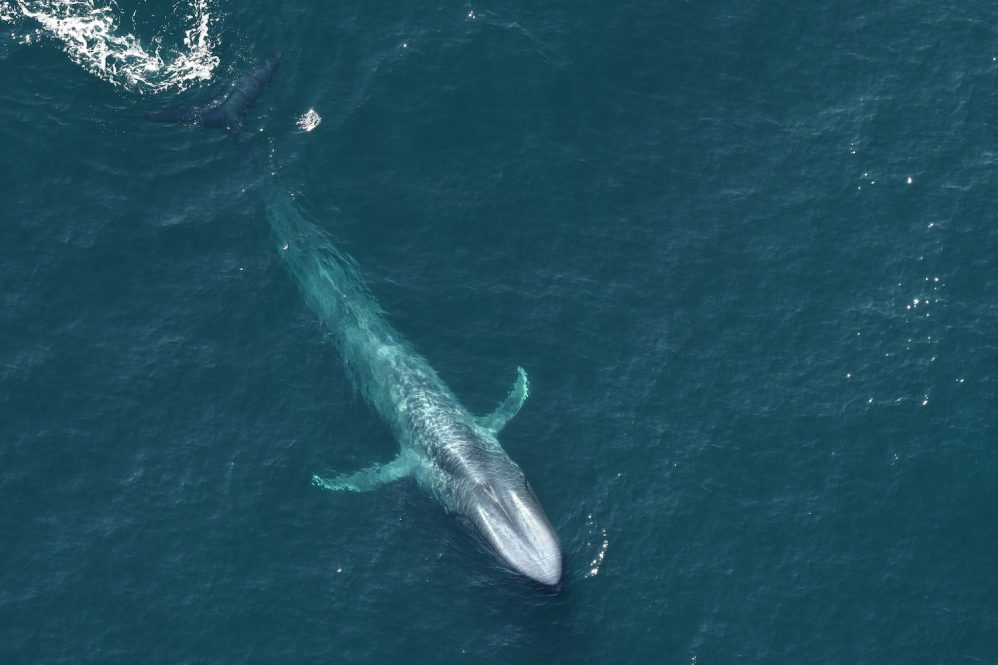A study published this week in the scientific journal Frontiers in Marine Science found that opening the 3.14 million acre Northeast Canyons and Seamounts Marine National Monument to commercial fishing reduces species protection in the richly diverse and vital ecological area.
The study used the Atlantic Ocean marine conservation area to explore the consequences of changing a policy that prevents fishing to a fisheries management policy.
“The idea for this study was generated when former President Trump stated that appropriately managed commercial fishing would not put the objects of scientific and historic interest that the Monument protects at risk. To explore this idea, the study brought together scientists with a broad range of expertise: fisheries management, ocean policy, and the ecology of species ranging from marine mammals to deep sea corals,” says Jessica V. Redfern, a senior scientist at the Anderson Cabot Center for Ocean Life at the New England Aquarium and the study’s lead author.
Peter Auster, UConn Research Professor Emeritus of Marine Sciences and Senior Research Scientist at Mystic Aquarium, and co-author, says the study was a great opportunity to fill some crucial knowledge gaps.
“We have gaps in our understanding and as we see, with greater and greater and greater clarity, there should be an emphasis on figuring out what we have and how to conserve it while we still want to get goods and services out of the oceans without jeopardizing it,” Auster says. “We need to expend more resources farther offshore to increase our knowledge – and wisdom – as we make policy and management decisions about exploiting ocean wildlife. For instance, how do we simultaneously conserve biological diversity and exploit natural resources? How do we balance using some places for direct economic and human benefit while protecting other areas to serve as reference sites to understand human impacts and ensure these natural resources are here for future generations?”
Contrary to the former president’s statement, the study found that opening the Monument is not without risk.
“We found that opening the Monument to commercial fishing reduces species protection,” the authors write in the report, adding that fixed gear fishing equipment exposes species to entanglement and bycatch risk and gear used at the bottom of the ocean exposes deep sea coral communities to damaging effects. The Monument “was designated as a marine national monument due to the area’s unique ecological resources that are a subject of scientific interest. Our case study demonstrates that a fisheries management policy is insufficient to protect these ecological resources,” they concluded.
The Monument, located 130 miles southeast of Cape Cod, is a majestic deep-water sanctuary for thousands of marine animals and sea birds amid colorful corals, steep canyons, and vast mountain ranges akin to those in national parks out West.
In 2016, after years of research, scientists from UConn, Mystic Aquarium, and New England Aquarium provided crucial evidence about the area’s rich biodiversity, leading President Obama to designate it a national marine protected area. His proclamation excluded all commercial-scale activities, including fishing and mineral extraction, with a seven-year moratorium for existing offshore lobster and red crab fisheries. President Trump lifted restrictions on commercial fishing in June 2020, opening large sections of the Monument to fishing again. The Biden-Harris Administration is considering restoring protections as part of their plan to conserve 30 percent of US lands and waters by 2030.
“One of today’s greatest conservation challenges is applying our many natural resource laws, policies, and management strategies to accommodate a diversity of ocean uses and human needs,” says Auster. “We need to address both sustainable use of economically valuable ocean resources and conserve precious marine biodiversity, our collective natural heritage.”
Other authors of the study include: Kelly A. Kryc, formerly of the Aquarium and now with Center for American Progress; Lena Weiss, Brooke C. Hodge, Orla O’Brien, and Scott D. Kraus, all from the New England Aquarium; Ester Quintana , formerly of the Aquarium and now of Simmons University’s Department of Biology; and Peter J. Auster of Mystic Aquarium and the University of Connecticut’s Department of Marine Sciences.



